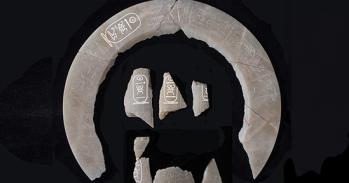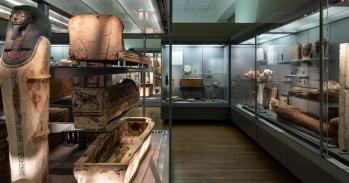
Multi-disciplinary archaeological survey at the site of Oued Beht, Morocco, reveals a previously unknown 3400–2900 BC farming society, shedding new light on North Africa’s role in Mediterranean prehistory.
Multi-disciplinary archaeological survey at the site of Oued Beht, Morocco, reveals a previously unknown 3400–2900 BC farming society, shedding new light on North Africa’s role in Mediterranean prehistory.
For over thirty years I have been convinced that Mediterranean archaeology has been missing something fundamental
Prof Cyprian Broodbank
Archaeological fieldwork in Morocco has discovered the earliest, previously unknown 3400–2900 BC farming society from a poorly understood period of north-west African prehistory. This is the earliest and largest agricultural complex yet found in Africa beyond the Nile.
This study, published in the journal Antiquity, reveals for the first time the importance of the Maghreb (north-west Africa) in the emergence of complex societies in the wider Mediterranean during the fourth and third millennia BC.
With a Mediterranean environment, a border with the Sahara desert and the shortest maritime crossing between Africa and Europe, the Maghreb is perfectly located as a hub for major cultural developments and intercontinental connections in the past.
Whilst the region’s importance during the Palaeolithic, Iron Age and Islamic periods is well known, there is a significant gap in knowledge of the archaeology of the Maghreb between c. 4000 and 1000 BC, a period of dynamic change across much of the Mediterranean.
To tackle this, a team of archaeologists led by Prof Cyprian Broodbank from the University of Cambridge, Prof Youssef Bokbot from INSAP, and Prof Giulio Lucarini from CNR-ISPC and ISMEO, have carried out collaborative, multidisciplinary archaeological fieldwork at Oued Beht, Morocco.
"For over thirty years I have been convinced that Mediterranean archaeology has been missing something fundamental in later prehistoric north Africa," said Broodbank. "Now, at last, we know that was right, and we can begin to think in new ways that acknowledge the dynamic contribution of Africans to the emergence and interactions of early Mediterranean societies."
"For more than a century the last great unknown of later Mediterranean prehistory has been the role played by the societies of Mediterranean’s southern, Africa shores west of Egypt," say the authors of the new study. "Our discoveries prove that this gap has been due not to any lack of major prehistoric activity, but to the relative lack of investigation, and publishing. Oued Beht now affirms the central role of the Maghreb in the emergence of both Mediterranean and wider African societies."
These results reveal that the site was the largest agricultural complex from this period in Africa outside of the Nile region. All of the evidence points to the presence of a large-scale farming settlement—similar in size to Early Bronze Age Troy.
The team recovered unprecedented domesticated plant and animal remains, pottery and lithics, all dating to the Final Neolithic period. Excavation also revealed extensive evidence for deep storage pits.
Importantly, contemporaneous sites with similar pits have been found on the other side of the Strait of Gibraltar in Iberia, where finds of ivory and ostrich egg have long pointed to African connections. This suggests that the Maghreb was instrumental in wider western Mediterranean developments during the fourth millennium BC.
Oued Beht and the north-west Maghreb were clearly integral parts of the wider Mediterranean region. As such, these discoveries significantly change our understanding of the later prehistory of the Mediterranean and Africa.
As the authors of the Antiquity article state: “It is crucial to consider Oued Beht within a wider co-evolving and connective framework embracing peoples both sides of the Mediterranean-Atlantic gateway during the later fourth and third millennia BC - and, for all the likelihood of movement in both directions, to recognise it as a distinctively African-based community that contributed substantially to the shaping of that social world.”

The text in this work is licensed under a Creative Commons Attribution-NonCommercial-ShareAlike 4.0 International License. Images, including our videos, are Copyright ©University of Cambridge and licensors/contributors as identified. All rights reserved. We make our image and video content available in a number of ways – on our main website under its Terms and conditions, and on a range of channels including social media that permit your use and sharing of our content under their respective Terms.





